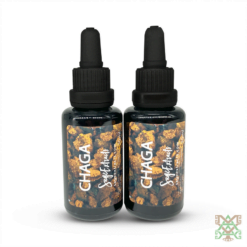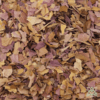-
×
 Chaga (Inonotus obliquus) - Sage Extracts - 30ml 2 ×
Chaga (Inonotus obliquus) - Sage Extracts - 30ml 2 ×€ 36,00€ 18,00You're getting this discount: 50% off
Subtotaal: € 36,00
 Chaga (Inonotus obliquus) - Sage Extracts - 30ml
Chaga (Inonotus obliquus) - Sage Extracts - 30ml Subtotaal: € 36,00
Desde € 7,39 Incl. VAT
Botanical name: Nelumbo Nucifera
Common name: Sacred Lotus
Plant part: Flowers
Form: Cut Flowers
Country: Thailand
Sacred Lotus belongs to the Nymphaeaceae (Water Lily family). Originally from Indonesia and India, Sacred Lotus was brought to China and Egypt thousands of years ago. From China it was taken to other parts of Asia including Japan and northern Australia. This wonderful plant is a perennial water plant, long grown in Oriental countries both as an ornamental and for its edible rhizomes and seeds. Rhizomes are thick and tuberous and creep in the earth at the bottoms of ponds or slow moving streams. The leaves are nearly round, large and long stemmed. They may float on deep water, but rise high above shallow water. It has large flowers up to 25 cm across and leaves 60 cm across. Both flowers and leaves sometimes grow up to 1.8 meter above water. The fruit is an enlarged receptacle, in which the many seeds are embedded.
White nenuphar, also known as Nymphaea alba, is a species of aquatic flowering plant in the Nymphaeaceae family. It’s a native of North Africa, temperate Asia, tropical Asia, and Europe. Due to the ideal conditions that are available for its growth, it is frequently grown in this region. However, the plant is not planted; rather, it develops naturally in the aquatic habitat. It prefers big ponds and lakes and it can grow in water that is 30 to 150 cm deep. Up to 30 cm in diameter, its leaves can cover 150 cm of space per plant. The white flowers are filled with numerous small stamens. The red variety (Nymphaea alba f. rosea), which was found in the early nineteenth century throughout the forest of Sweden, Tiveden, is grown there. Prior to it being protected, the discovery resulted in widespread exploitation that almost drove it to extinction in the wild.
It is an aphrodisiac/anaphrodisiac depending on the source and encompasses the integral alkaloids nupharine and nymphaeine. The flower blossoms as well as other components are more potent than the root system and stems, which are also used in traditional herbal treatments. Alcohol enhances the pharmacological effect and can be utilized to obtain the energetic active compounds. For centuries and centuries, monks and nuns squashed and combined wine with both the chemical’s root as an anaphrodisiac. Authors of the earliest printed medical texts upheld this use while cautioning readers against taking high doses frequently.
The dried water lily roots have traditionally been used to treat a dry throat or the beginning of a cold, dried water lily plant roots are used in that process. Numerous Mayan magical rituals from the colonial era invoked the water lily to treat skin conditions like ulcers. According to reports, the plant is still employed in the Yucatán for ethno-medical purposes today.
It has been used to make a douche to treat vaginal soreness or discharges externally. It is used as a poultice to treat boils and abscesses when combined with slippery elm or flax. The rhizome can be dried and harvested in the autumn for use in the future. The flowers are said to be both aphrodisiac and sedative. They reportedly are helpful in the treatment of insomnia, anxiety, and other conditions because they have a general calming and sedative effect on the nervous system.
No natural product is poisonous, but its creamy, leathery pads limit out light, protecting and feeding the amphibians, oysters, and aquatic species that hide among the main stem in the short to medium term.
Except for the flowers, seeds and, in certain species, the tubers, water lilies are all highly toxic and constitute an alkaloid called nupharin in nearly all of their parts. The European species are not edible because they have high nupharin concentrations.
Only logged in customers who have purchased this product may leave a review.
Herbs (Plants)
Herbs (Plants)
Scientific Name
 Desde
Desde
Reviews
There are no reviews yet.